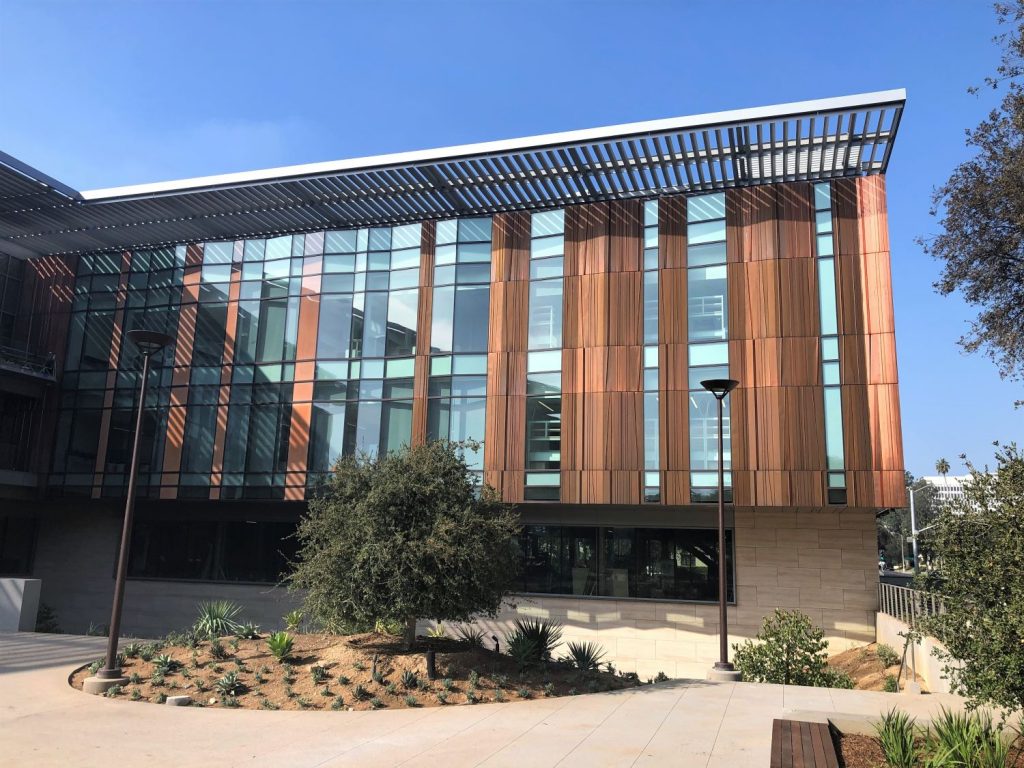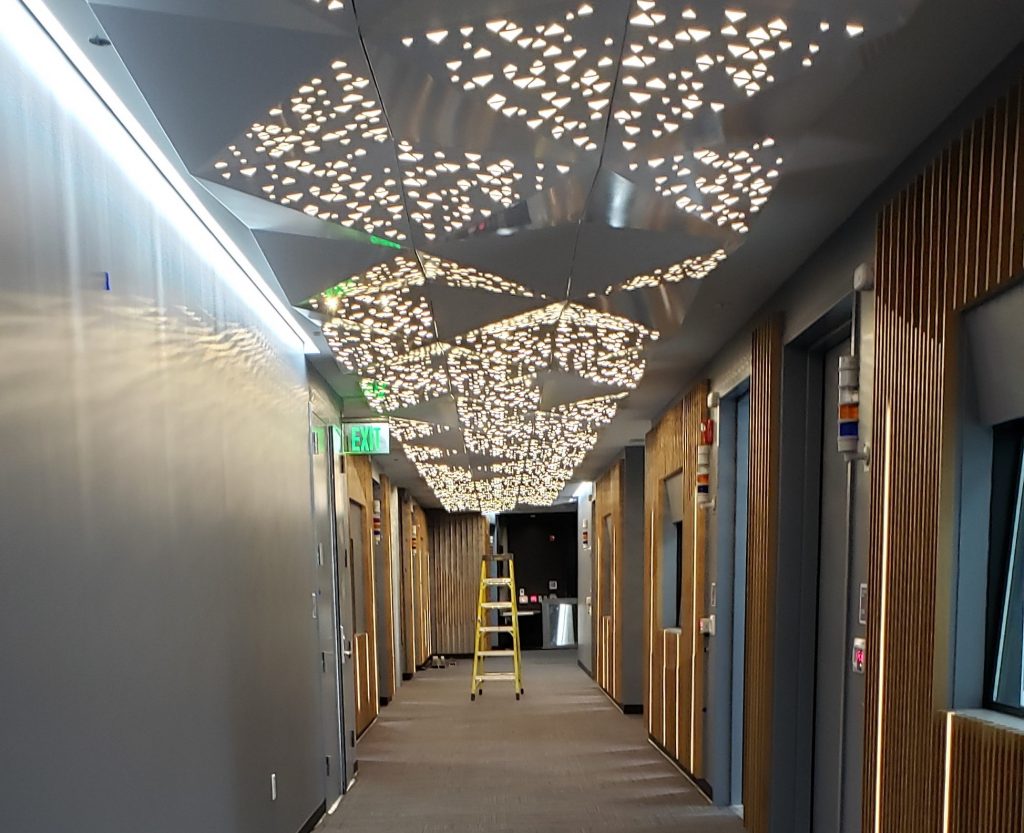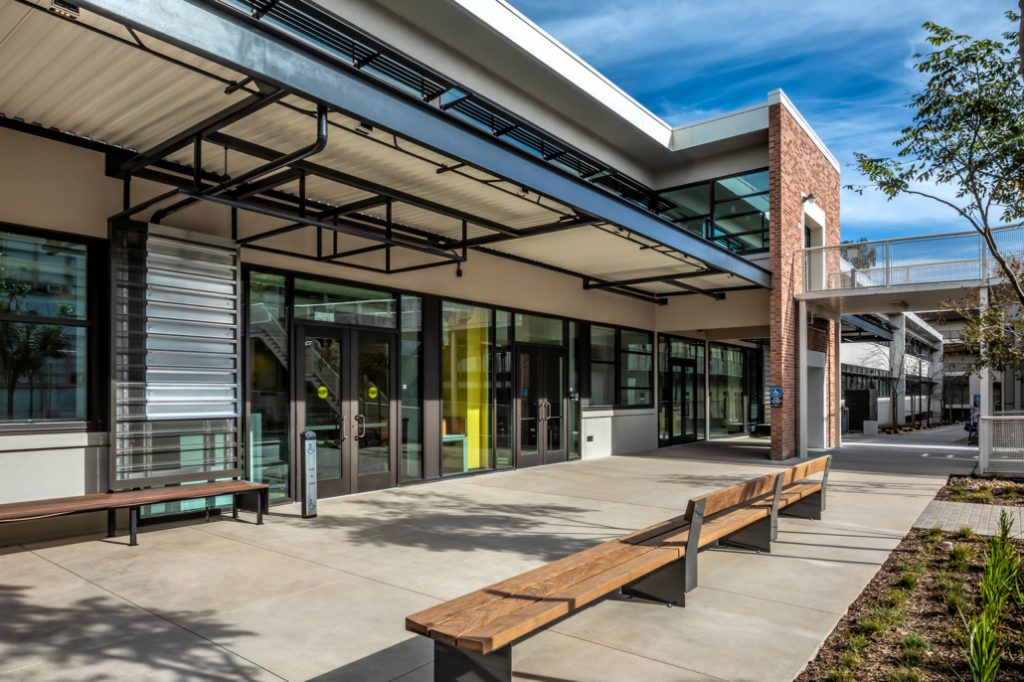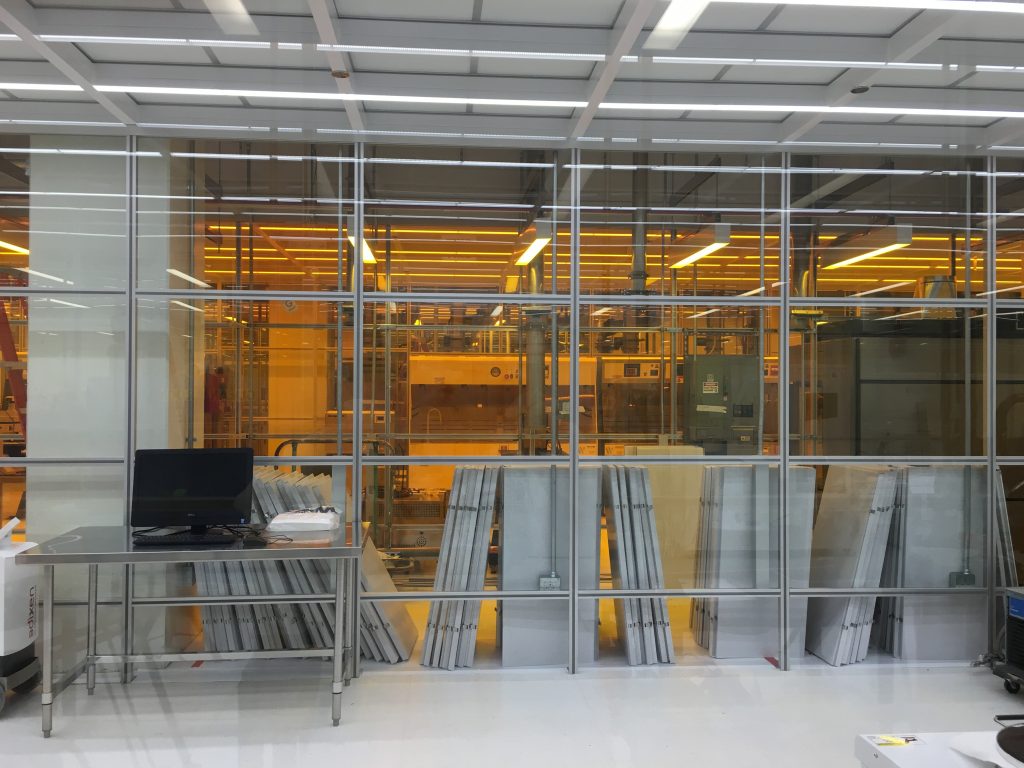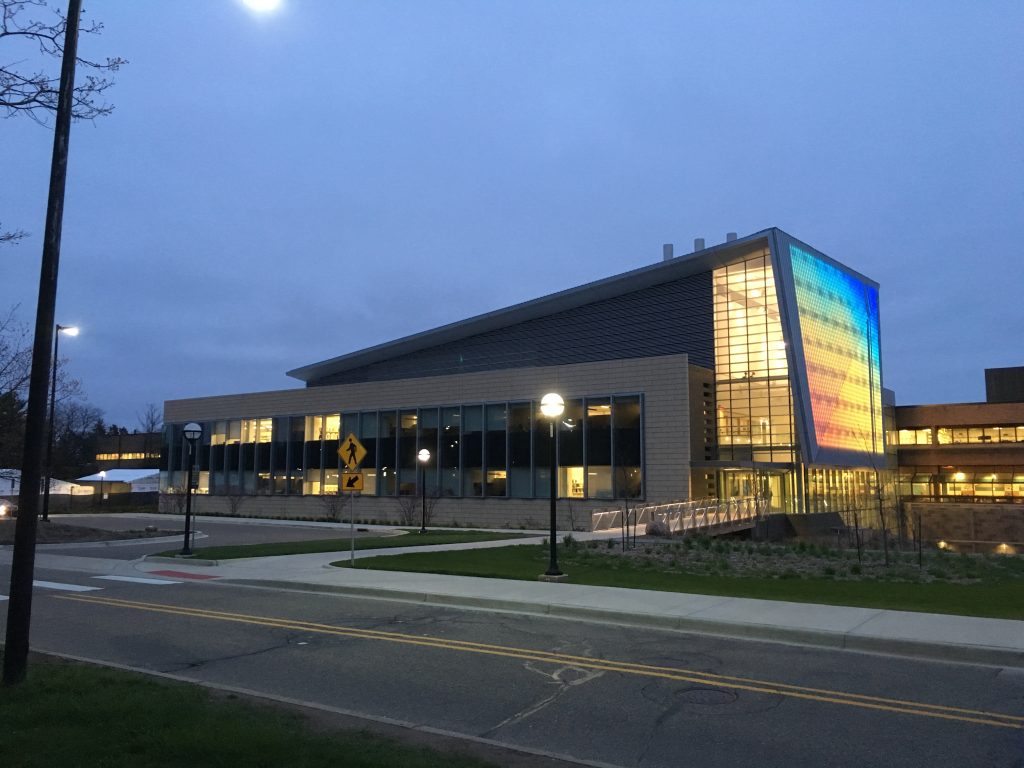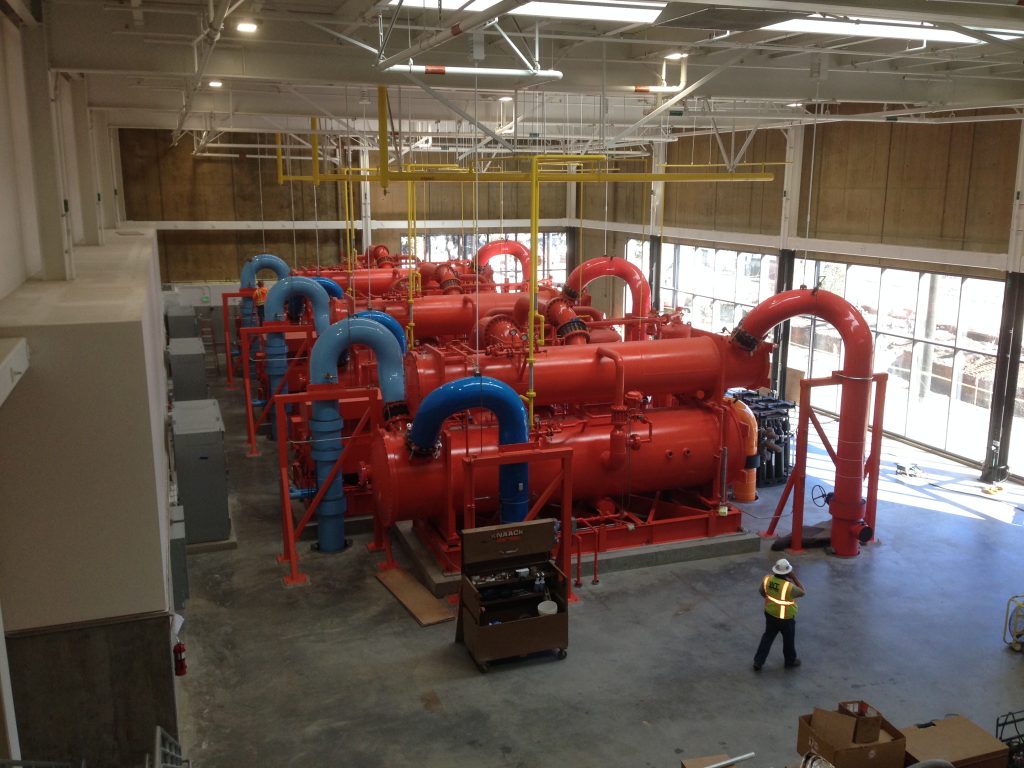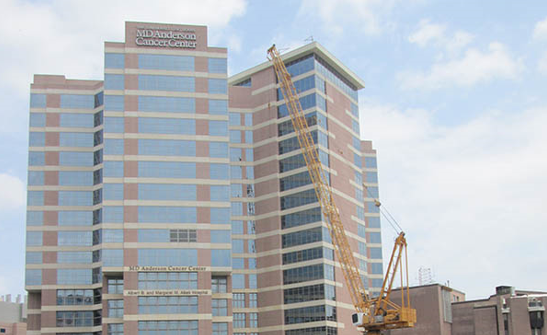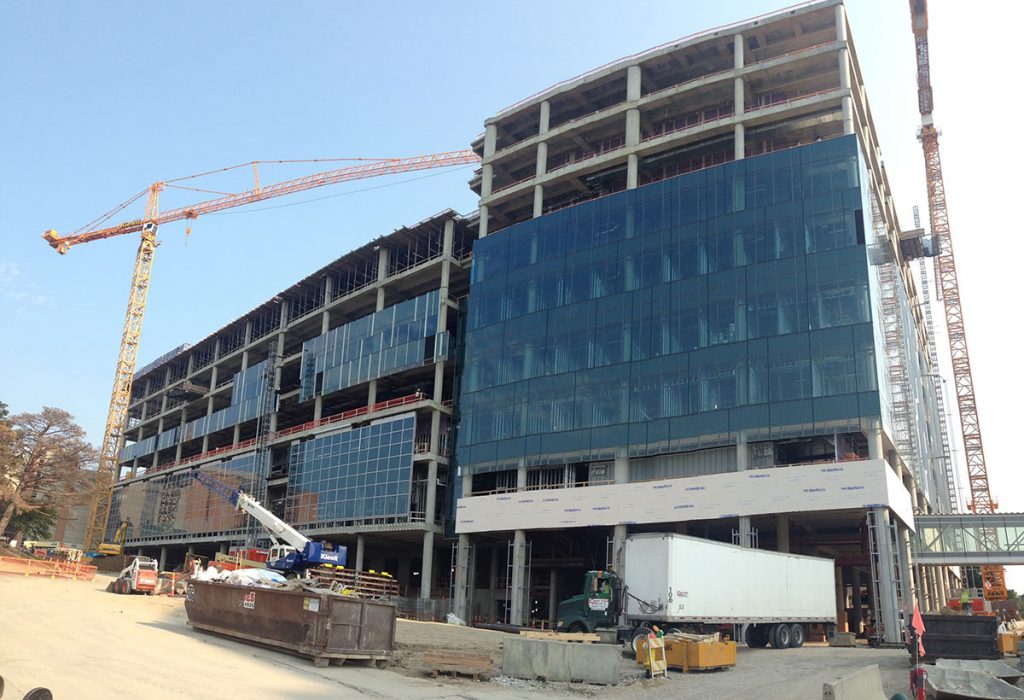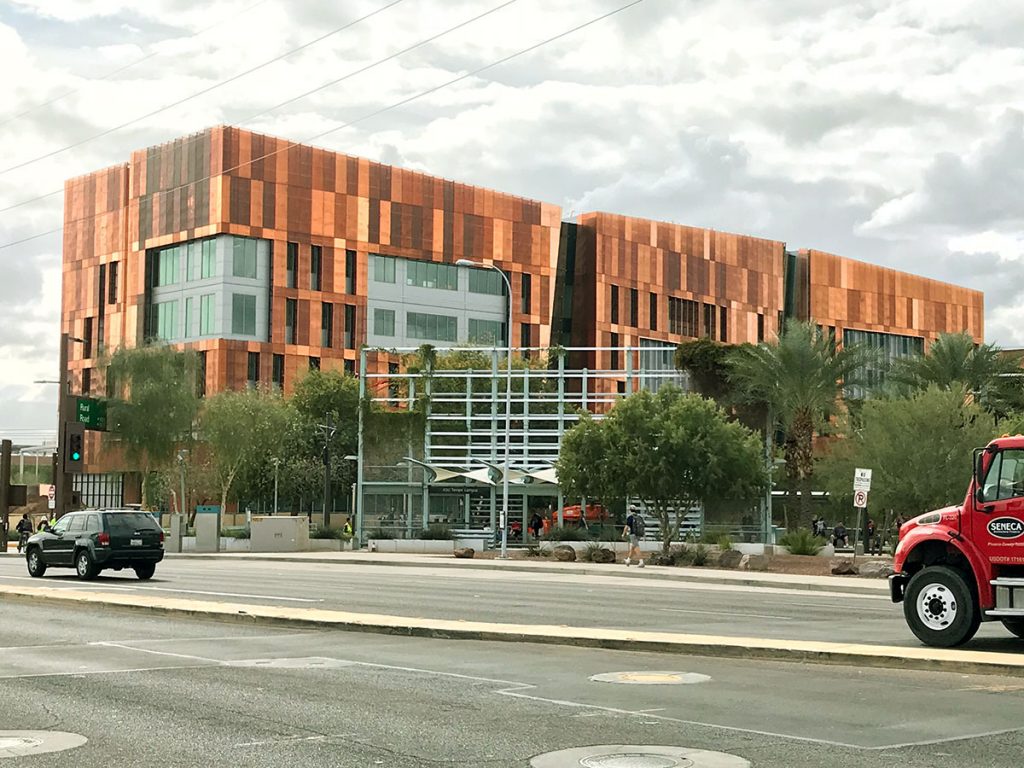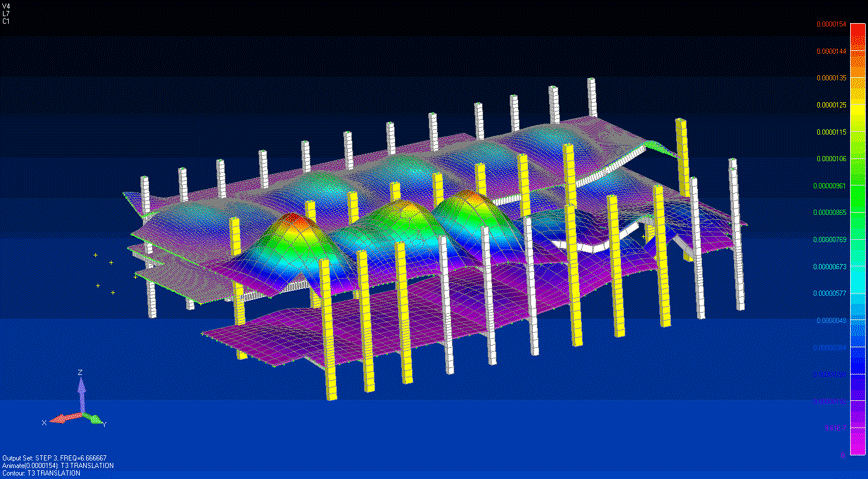Building expansion and densely developed communities and campuses often require construction adjacent to highly vibration and noise sensitive facilities such as advanced technology manufacturing, hospitals, residences, and laboratories. Excessive noise and vibration from construction can lead to code violations, sleep disturbance, and, in the case of vibration-sensitive facilities, impact research and production. Proper planning prior to and monitoring during construction can avoid costly delays caused by exceeding allowable thresholds.
It is often advisable to install a vibration and/or noise monitoring system at the construction site or within the nearby sensitive facilities. Monitoring projects can range from short-term diagnostic monitoring to permanent compliance monitoring throughout construction and beyond. We have extensive experience with both applications. The monitoring typically required for vibration-sensitive facilities such as those for research, advanced technology manufacturing, and hospitals differs from that associated with potential structural damage (i.e., from construction or blasting) with regard to both the equipment used and the sophistication of the measurement process.
Our monitoring projects are typically carried out in several phases: (1) establishment of vibration and noise criteria for the sensitive facility; (2) determination and programming of monitoring system parameters such as sensor locations, threshold limits, and alarming and notification protocols; (3) site-specific measurements of ambient (pre-construction) noise and vibration, and of potential noise and vibration sources in order to establish safe set-back distances for particular construction techniques; and (4) continuous monitoring and reporting during construction.
It is often advisable to install a vibration and/or noise monitoring system at the construction site or within the nearby sensitive facilities. Monitoring projects can range from short-term diagnostic monitoring to permanent compliance monitoring throughout construction and beyond. We have extensive experience with both applications. The monitoring typically required for vibration-sensitive facilities such as those for research, advanced technology manufacturing, and hospitals differs from that associated with potential structural damage (i.e., from construction or blasting) with regard to both the equipment used and the sophistication of the measurement process.
Our monitoring projects are typically carried out in several phases: (1) establishment of vibration and noise criteria for the sensitive facility; (2) determination and programming of monitoring system parameters such as sensor locations, threshold limits, and alarming and notification protocols; (3) site-specific measurements of ambient (pre-construction) noise and vibration, and of potential noise and vibration sources in order to establish safe set-back distances for particular construction techniques; and (4) continuous monitoring and reporting during construction.
